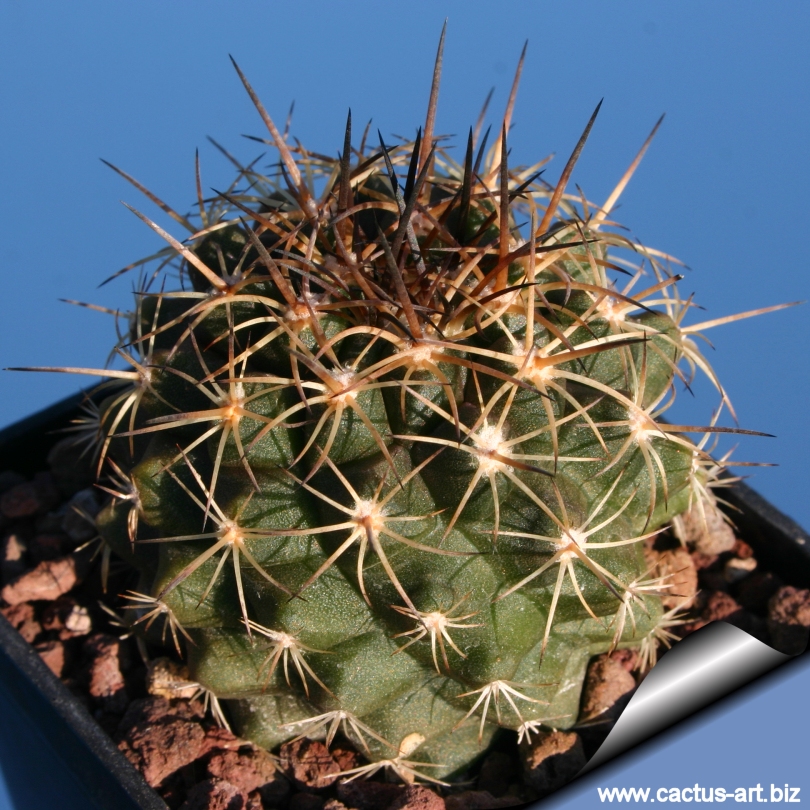|
|
|

Copiapoa domeykoensis
A fiercely spined seedling.
|
|
Photo
of conspecific taxa, varieties, forms and cultivars of Copiapoa
pendulina (This
taxon has lots of synonyms (like most Copiapoa),
with several
controversial varieties and subspecies):
|
|


Advertising
|
|
|
|
|
Family:
Cactaceae
(Cactus
Family)
Copiapoa,
domeykoensis
Knize n.n
Scientific name: Copiapoa
coquimbana v. domeykoensis
Origin:
This plant is restricted to a very small area at 18 km South-west of
Domeyko (Northern range of the species)
Habitat:
It grows in very
dry stony environment on the side slope of the valley at an altitude of
about 300 mt. It is often fund growing along with the very rare Eriosyce
algarrobensis and Maihueniopsis domeykoensis
.
Conservation status: Listed in
CITES appendix 2.
Synonyms:
- Copipoa
pseudocoquimbana var. domeykoensis ,
In: Kakteen in
Südamerika, 3: 1077,1980.
- Copiapoa pendulina
Ritter
(?)
- Copiapoa
alticostata
(form)
|
|
|
|
Description: The “
domeykoensis” is a giant form of C. coquimbana that is found on the far
North part of the habitat of this species. These plants are very large
(they are among the biggest of all Copiapoas) with long curved (but
variable) spines. It is solitary or sometime form little clumps with
usually not more than 3-7 individual heads. Another peculiarity of this
species is the long, strong tap root that is bigger than that of the
Copiapoa vallenariensis.
Stem: Globose , 20-25 (or more) cm in diameter, that branch
profusely, forming large clumps up 1 m wide and 60cm high. Pale to
bright green, and crowned by a dense mass of long white wool,
particularly at flowering time. There are 10 to 17 tuberculate ribs,
with a rounded, raised edge and a wide base.
Areoles: apical, convex, covered with short wool when young,
later glabrous, about 0,5-0,8 cm, 2 cm apart.
Radial spines: 8-10, fairly slender or slightly curved,
horizontal, honey-amber, brown or black, becoming gray with age.
Central spines: Usually one or two thicker, 3 to 5 (or more) cm
long.
Flowers: Campanulate, 3 cm long, and they grow from the center of
the white wool at the apex. The outer segments of the perianth are
linear and greenish. The inner segments are wide, blunt and yellow. |
|
Cultivation: This
extremely slow growing cactus is kept for the beauty of its form.
It
must be protected from excessive heat and sun in
summer, and seems to do best in cultivation with a bit of shade.
It requires light but regular waterings in summer, but let the soil
mix dry between waterings, Prone to rot if over-watered.
Needs good drainage.
Keep warm and dry in
winter (10°C) to avoid rot. Not highly tolerant of a great deal
of frost. (Frost tolerance 0°C)
Propagation: Seeds,
or stems planted as cuttings. Grafting
is often used to speed growth rate,
and to create a back-up to plants in collection.
|
|